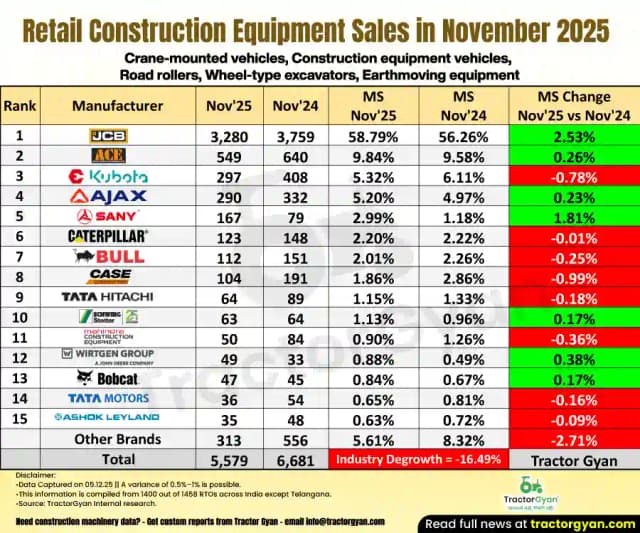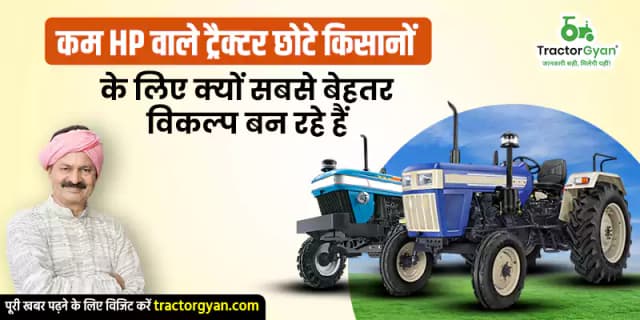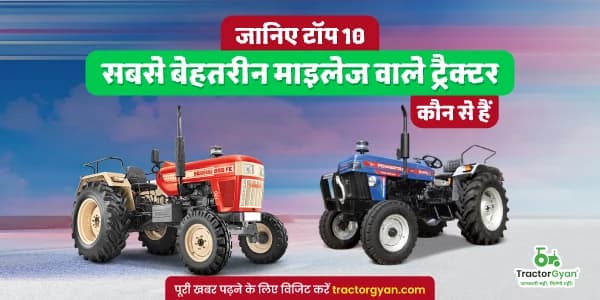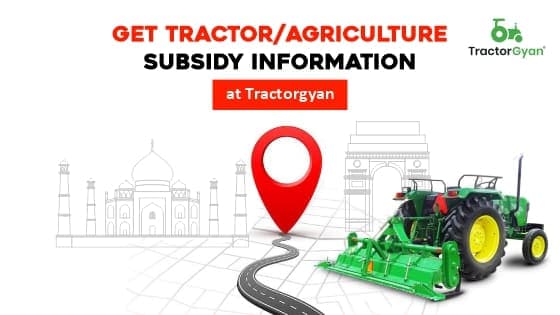Top 10 Tips for Tractor Tyre Maintenance
टेबल ऑफ कंटेंट
No matter how big, strong, and durable a tractor may look, the parts that suffer damage on the field are the tyres. However, you can only minimise tractor tyre wear and strain by properly maintaining your tractor tyres.
Even if the tractor tyre is of any brand like MRF tractor tyre, JK tractor tyre, Apollo tractor tyre, CEAT tractor tyre, Good Year tractor tyre, and more, maintenance is very important for its long life. Now, we will tell you how to keep your tractor tyres well-maintained as time passes.
Here are the Top 10 Tractor Tyre Maintenance Tips
1. Observe the pattern of your tractor tyres
Road use caused the front tyres on your tractor to wear unevenly throughout their tread profiles. Switch the tyres from one side to the other to level out wear throughout the tractor tyre's lifetime. However, to fix the issue, you should refer to the operator's manual for your tractor and adjust the tracking as directed, making sure the front wheels are parallel.
The wear on your tractor's front tyres will be enhanced if you frequently use it for work involving a front implement or a front loader or frequently attach front weights, even when necessary. Consider removing weights when not necessary.
2. Be smooth while you drive
Whenever you stop the tractor using the emergency brakes, it may stop immediately, but the tyres still bear the full force. Unpleasant slowing down has a bad impact on the durability of your tractor tyres, which leads to premature tyre wear.
Therefore, it is always advised to drive at a neutral speed that will eventually prevent you from using the brakes as frequently as possible. Rash driving and routine stops (at high speeds) can encourage tyre slipping, which invites an accident and forces the tyre to lose much more quickly than expected.
3. Store the tyre in a protected area
The first step in storing tyres is cleaning them, Tyres should always be kept in a cool, dry location, away from artificial materials and substances like oil and products derived from oil. They should not be exposed to sunlight or heat, and hotlines.
4. Mounting and demounting the tractor tyres
The fourth step of tractor tyre maintenance is to always inflate the tractor tyre as directed by the manufacturer. Tyre failure caused by either over- or under-inflation can result in traffic accidents. Rims should not be attempted to be taken apart while the tyre is inflated.
While the tyre is filled, avoid tapping or hammering the rim assembly. Tyres should only be replaced with tyres whose bead sizes are the same. Use non-flammable materials only to fill tyres.
5. Alignment of the wheel is necessary
The wheels' points are changed according to the vehicle manufacturer's specifications as part of routine vehicle/tractor maintenance, which also includes changing the wheel arrangement.
These adjustments are made to ensure that each tyre wears evenly, extend the life of each tyre, and check for upright, accurate vehicle motion when driving along a straight, level street. You must align the wheels after every 7,000 kilometres or whenever you notice any abnormally high tyre wear.
6. Water ballasting is required
Water ballasting, which uses the increased weight to lower the centre of gravity and prevent slippage simultaneously, is frequently used for agricultural tyres to boost vehicle stability and grip.
7. Protection from UV and ozone exposure
Tractor tyres are affected by UV and ozone exposure. Ozone and too much sunlight can break down tyre rubber compounds and cause degradation and cracking. Farmers should buy UV- and ozone-blocking tyre coverings and keep their tractors in the shade while not in use.
8. Clean and lubricate correctly
Maintaining tractor tyres requires frequent lubrication and cleaning. After a day in the fields, clean the tyre tread from dirt and waste. Cleaning tyres helps lower waste accumulation, balancing and distributing wear on them. Lubricating valves and tyre rims also prevent rust and prolong the lifetime of the tyres.
9. Maintain cracked or rusted rims
Rusted or cracked tyre rims might seriously compromise tractor operators' safety. These problems could also make the wheel's construction less robust, affecting handling and control. Always follow the manufacturer's recommended rim size.
10. Verify the accuracy of the balance
The balance of the wheels determines the tractor's stability. Usually, this is disregarded! Improper wheel alignment can result in early damage and unequal tyre wear. Regular wheel checks for balance help solve any issues as soon as they are found.
How to Identify Whether Your Tyre Needs a Replacement?
1. Bulges bulging around
If an abnormal bulge bulges out over the sidewall or the tyre tread, it indicates that the tyre’s structure has been prone to damage. This can happen due to driving habits or low tyre pressure.
2. Tyre cracks
Vehicle tyres develop cracks due to temperature fluctuations in countries with hot temperatures. Tractor tyres usually develop cracks in around six to seven years. As the rubber gets old, it breaks and starts decomposing. Cracked tyres can fail at any time and can result in a serious mishap without forewarning.
Conclusion
From the above information, it is clear that the maintenance of tractor tyre is a must because whether the tractor tyres are from the best brands like MRL tractor tyre, Ralco tractor tyre, Birla tractor tyre, BKT tractor tyre, TVS tractor tyre, and more, but long-term use only be ensured by proper maintenance of tractor tyre maintenance.
Why TractorGyan?
If you want to know more about tractor tyres, TractorGyan is the best place to find all the details related to the top models of tractor tyre brands, their prices, and specifications. Stay connected for more useful information.
कैटेगरी
और ब्लॉग पढ़ें
As human eating and food consumption requirements are vast, one type of agriculture can’t cater to all these needs. This is why multiple types of farming are there and plantation agriculture is one of them. Over the years, it has shaped economies,...
As the new month is up, so is the latest FADA sales report and the data clearly shows how Coronavirus has highly affected the tractor industry, just like the economy of our nation. Unfortunately, the tractor industry saw a major decline in...
इसके बारे में अपनी टिप्पणी लिखें Top 10 Tips for Tractor Tyre Maintenance
.webp&w=1920&q=75)
ट्रैक्टर और कृषि से जुड़े सबसे अधिक खोजे जाने वाले ब्लॉग्स
30 Jul 2025
30 Jul 2025
29 Jul 2025
08 Sep 2025
03 Jul 2025
30 Jul 2025
30 Jul 2025
30 Jul 2025
29 Jul 2025
30 Jul 2025
29 Sep 2025
31 Jul 2025
30 Jul 2025
31 Jul 2025















.webp&w=2048&q=75)










.webp&w=2048&q=75)
.webp&w=2048&q=75)



























